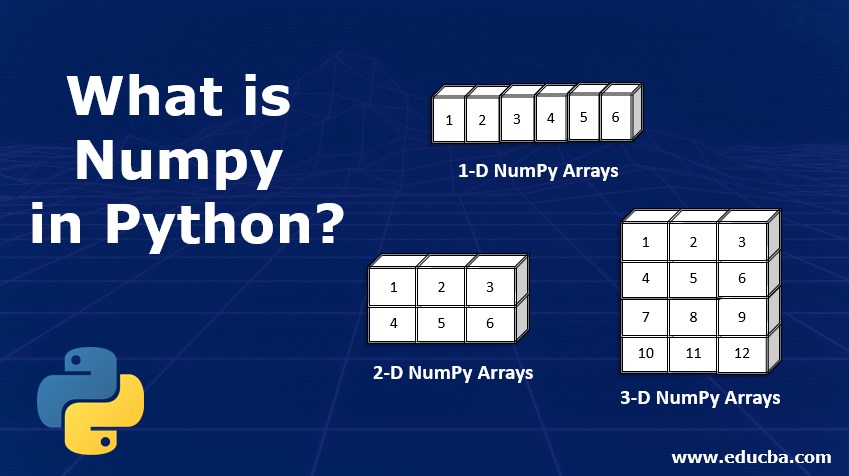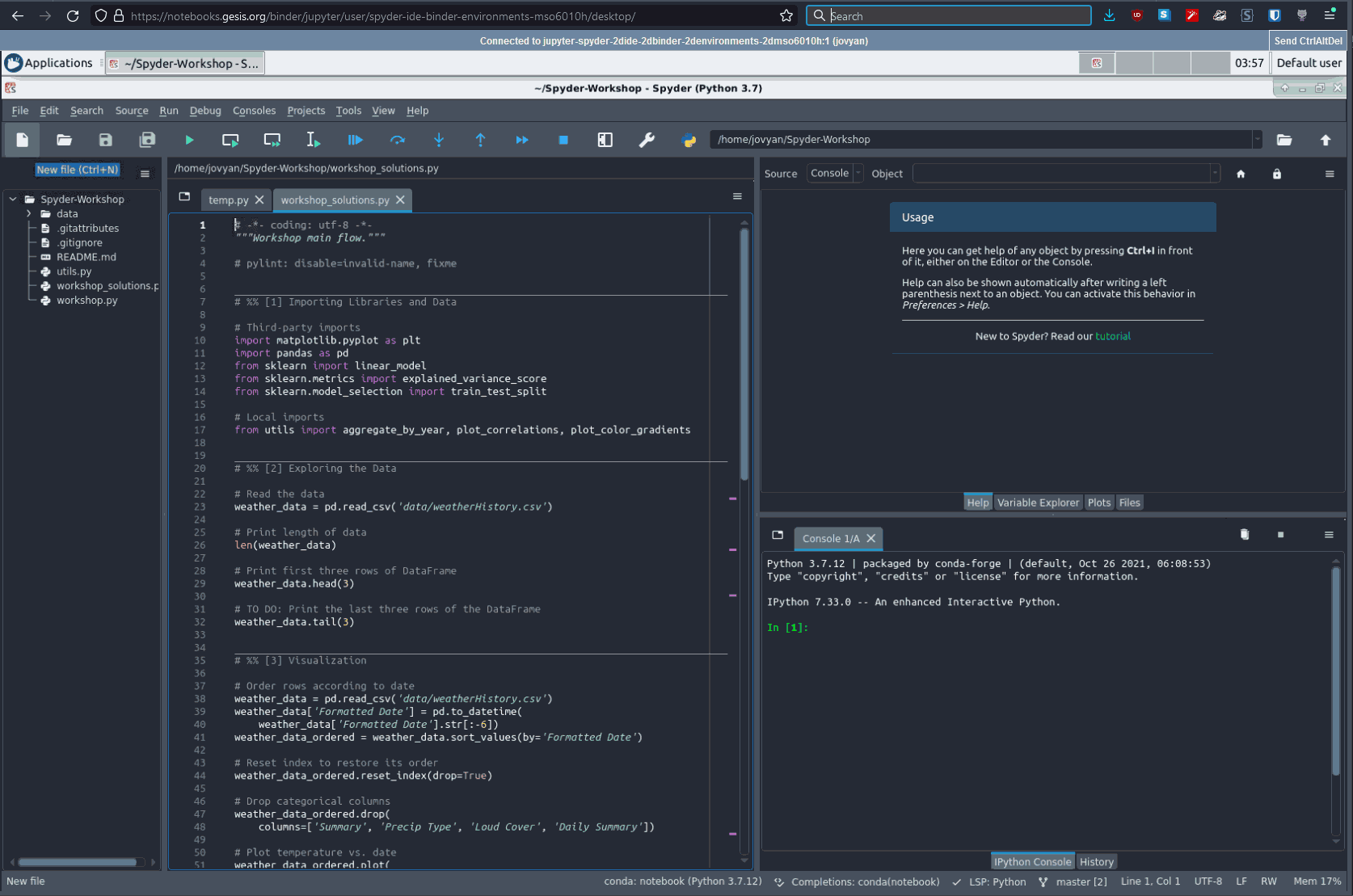Anaconda Individual Edition contains condaand Anaconda Navigator,as well as Python and hundreds of scientificpackages. When you installed Anaconda,you installed all these too.
Install Anaconda. In this step, we will install the Anaconda Python software on your system. This step assumes you have sufficient administrative privileges to install software on your system. Double click the downloaded file. Follow the installation wizard.
Conda works on your command line interface such asAnaconda Prompt on Windows and terminal on macOS and Linux.
Then instead of just calling pip install, you can use the module flag -m with python so that it uses the anaconda python for the installation. Python -m pip install This installs the package to the anaconda library directory rather than to the library directory associated with (the non-anaconda) pip. Anaconda Navigator and JupyterLab both are the open-source distribution of Python. If you’re a Linux user and you are used to the command prompt or terminal for Python, I’m sure you’re looking for a simple but effective environment to write python where you can input and output data files. In Linux, Anaconda. The Earth Engine Python API can be installed to a local machine via conda, a Python package and environment manager. Conda is bundled with Anaconda and Miniconda Python distributions. Anaconda is a data science programming platform that includes 1500+ packages, while Miniconda includes only conda and its dependencies.
Navigator is a desktop graphical user interface thatallows you to launch applications and easily manageconda packages, environments, and channels withoutusing command-line commands.
You can try both conda and Navigatorto see which is right for you to manage your packages andenvironments. You can even switch between them, and the work youdo with one can be viewed in the other.
Try this simple programming exercise, with Navigator and thecommand line, to help you decide which approach is right for you.
When you’re done, see What’s next?.
Your first Python program: Hello, Anaconda!¶
Use Anaconda Navigator to launch an application. Then, create and runa simple Python program with Spyder and Jupyter Notebook.
Open Navigator¶
Choose the instructions for your operating system.
- Windows.
- macOS.
- Linux.
Windows
From the Start menu, click the Anaconda Navigator desktop app.
macOS
Open Launchpad, then click the Anaconda Navigator icon.
Linux
Open a terminal window and type anaconda-navigator.
Run Python in Spyder IDE (integrated development environment)¶
Tip
Navigator’s Home screen displays several applications for you tochoose from. For more information, see links at the bottom of this page.
On Navigator’s Home tab, in the Applications pane on the right, scrollto the Spyder tile and click the Install button to install Spyder.
Note
If you already have Spyder installed, you can jump right to theLaunch step.
Launch Spyder by clicking Spyder’s Launch button.
In the new file on the left, delete any placeholder text, then type orcopy/paste
print('HelloAnaconda').In the top menu, click File - Save As and name your new program
hello.py.Run your new program by clicking the triangle Run button.
You can see your program’s output in the bottom right Console pane.
Close Spyder¶
From Spyder’s top menu bar, select Spyder - Quit Spyder (In macOS,select Python - Quit Spyder).
Run Python in a Jupyter Notebook¶
On Navigator’s Home tab, in the Applications pane on the right, scrollto the Jupyter Notebook tile and click the Install button to install JupyterNotebook.
Note
If you already have Jupyter Notebook installed, you can jump right tothe Launch step.
Launch Jupyter Notebook by clicking Jupyter Notebook’s Launch button.
This will launch a new browser window (or a new tab) showing theNotebook Dashboard.
On the top of the right hand side, there is a dropdown menu labeled “New”.Create a new Notebook with the Python version you installed.
Rename your Notebook. Either click on the current name and edit it orfind rename under File in the top menu bar.You can name it to whatever you’d like, but for this example we’ll useMyFirstAnacondaNotebook.
In the first line of the Notebook, type or copy/paste
print('HelloAnaconda').Save your Notebook by either clicking the save and checkpointicon or select File - Save and Checkpoint in the top menu.
Run your new program by clicking the Run button or selectingCell - Run All from the top menu.
Close Jupyter Notebook¶
- From Jupyter Notebooks top menu bar, select File - Close and Halt.
- Click the Quit button at the upper right of the Notebook Dashboardand close the window or tab.
Close Navigator¶
Anaconda Python Install Pandas
From Navigator’s top menu bar, select Anaconda Navigator - QuitAnaconda-Navigator.
Write a Python program using Anaconda Prompt or terminal¶
Open Anaconda Prompt¶
Choose the instructions for your operating system.
- Windows.
- macOS.
- Linux.

Windows
From the Start menu, search for and open “Anaconda Prompt”:
macOS
Open Launchpad, then click the terminal icon.
Linux

Open a terminal window.
Start Python¶
At Anaconda Prompt (terminal on Linux or macOS), type pythonand press Enter.
The >>> means you are in Python.
Write a Python program¶
At the >>>, type print('HelloAnaconda!') and press Enter.
When you press enter, your program runs. The words “Hello Anaconda!” print tothe screen. You’re programming in Python!
Exit Python¶
On Windows, press CTRL-Z and press Enter. On macOS or Linux typeexit() and press Enter.
Optional: Launch Spyder or Jupyter Notebook from the command line¶
- At the Anaconda Prompt (terminal on Linux or macOS), type
spyderand press Enter.Spyder should start up just like it did when you launched itfrom Anaconda Navigator. - Close Spyder the same way you did in the previous exercise.
- At the Anaconda Prompt (terminal on Linux or macOS), type
jupyter-notebookand press Enter.
Anaconda Python Install Mac Pro
Jupyter Notebook should start up just like it did when you launchedit from Anaconda Navigator. Close it the same way you did in theprevious exercise.
What’s next?¶
Using Navigator¶
Using conda¶
Using Spyder¶
Using Jupyter Notebook¶
Anaconda Python Install Cuda
Links to IDE documentation¶
Review the system requirements listed below before installing Anaconda Individual Edition. If you don’t want the hundreds of packages included with Anaconda, you can install Miniconda, amini version of Anaconda that includes just conda, its dependencies, and Python.
System requirements
- License: Free use and redistribution under the terms of the ../eula.
- Operating system: Windows 8 or newer, 64-bit macOS 10.13+, or Linux, including Ubuntu, RedHat, CentOS 6+, and others.
- If your operating system is older than what is currently supported, you can find older versions of the Anaconda installers in our archive that might work for you. See Using Anaconda on older operating systems for version recommendations.
- System architecture: Windows- 64-bit x86, 32-bit x86; MacOS- 64-bit x86; Linux- 64-bit x86, 64-bit Power8/Power9.
- Minimum 5 GB disk space to download and install.
On Windows, macOS, and Linux, it is best to install Anaconda for the local user,which does not require administrator permissions and is the most robust type ofinstallation. However, if you need to, you can install Anaconda system wide,which does require administrator permissions.
Silent mode install
You can use silent mode toautomatically accept default settings and have no screen prompts appear duringinstallation.
Using Anaconda on older operating systems
We recommend upgrading your operating system. Most OS that are no longersupported in the latest Anaconda are no longer getting security updates.Upgrading your OS allows you to get the latest packages, performanceimprovements, bug fixes, etc.
To use Anaconda on older operating systems, download from our archive.You will not be able to use conda to update or install packages beyondthe Anaconda version noted in the table below, unless you limit it toversions available at the time that particular version of Anacondawas released.You can see what was available by checking the package table archives.
| Operating system | How to install Anaconda |
|---|---|
| macOS 10.10-10.12; Windows 7 | Use the command line or graphical installers for Anaconda versions 2019.10 and earlier. Download from our archive. |
| macOS 10.9 | Use the command line or graphical installers for Anaconda versions5.1 and earlier. Note Qt and other packages released after Anaconda Distribution 5.1 (February 15th, 2018)may not work on macOS 10.9, so it may be necessary to not update certain packages beyond this point. |
| macOS 10.7 and 10.8 | Use the command line installers for Anaconda versions 4.2 and earlier. |
| macOS 10.5 and 10.6 | Use the command line installers for Anaconda versions 1.8 and earlier. |
| Windows XP | Use Anaconda versions 2.2 and earlier. |
| Centos5 (or equivalent) | Use Anaconda versions 4.3 and earlier. |
Installing Anaconda on a non-networked machine (air gap)
- Obtain a local copy of the appropriate Anaconda installer for the non-networked machine. You can copy the Anaconda installer to the target machine using many different methods including a portable hard drive, USB drive, or CD.
- After copying the installer to the non-networked machine, follow the detailed installation instructions for your operating system.
Note
You can install offline copies of both docs.anaconda.com and enterprise-docs.anaconda.com by installing the conda package anaconda-docs: condainstallanaconda-docs

You can install offline copies of documentation for many of Anaconda’s open-source packages by installing the conda package anaconda-oss-docs: condainstallanaconda-oss-docs
Other ways to get Anaconda or Miniconda
You can find the official Anaconda or Miniconda AMIs on the AWS Marketplace.
You can find the official Anaconda and Miniconda Docker images on Docker Hub.
If you have a CDH cluster, you can install the Anaconda parcel using Cloudera Manager. The Anaconda parcel provides a static installation of Anaconda, based on Python 2.7, that can be used with Python and PySpark jobs on the cluster.
Troubleshooting
If you experience errors during the installation process,review our Troubleshooting topics.
